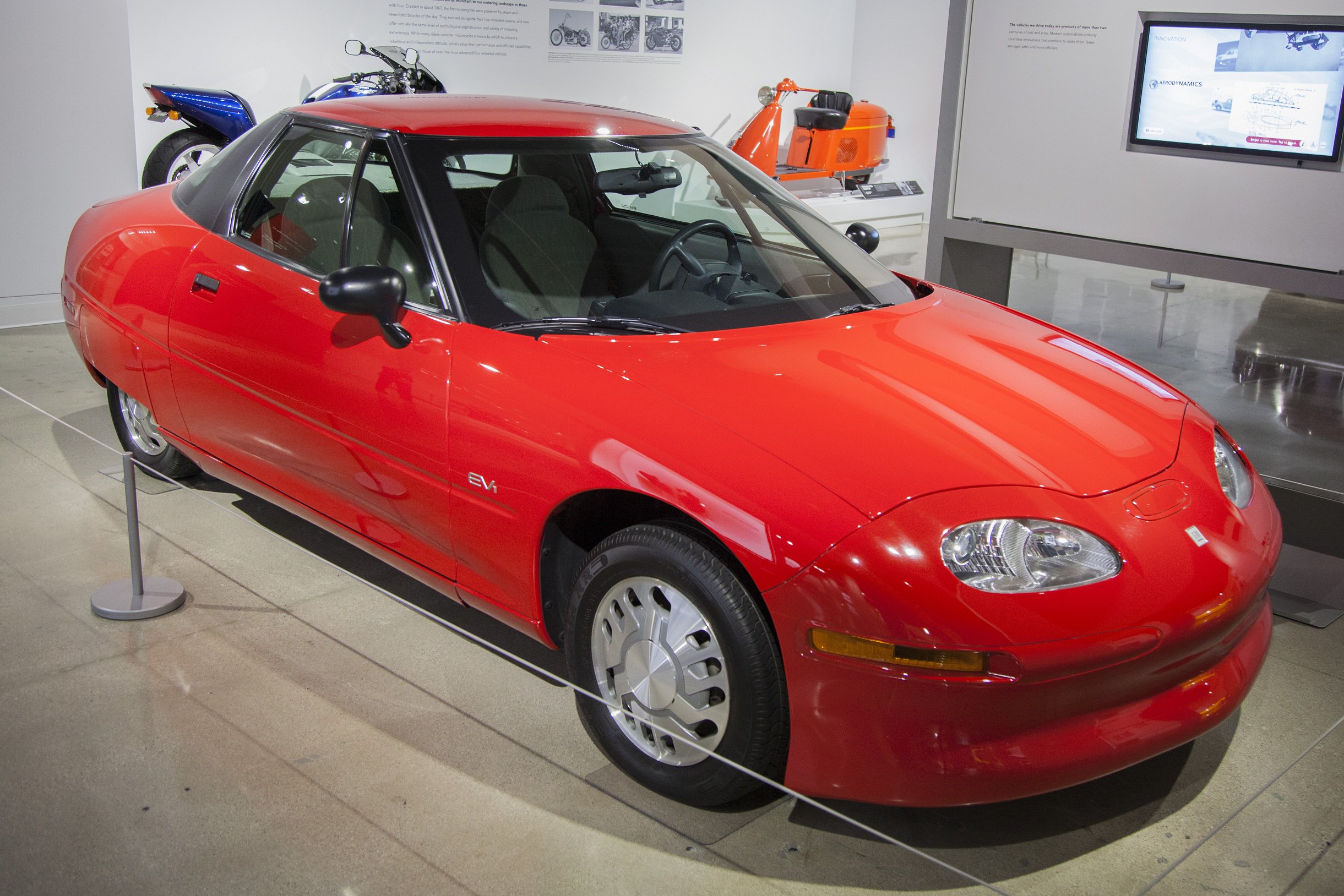None EV1

The descriptions of the Classic Cars in the Directory were partly generated or supplemented with the help of artificial intelligence (AI). The content may occasionally not always be entirely accurate or factually correct despite careful checking.
The GM EV1 was an electric car produced by General Motors from 1996 to 1999. It was the first electric car produced by a major automobile manufacturer and was renowned for its advanced technology and design.
The GM EV1 was powered by an AC induction motor that was capable of producing 137 horsepower and 110 lb-ft of torque. The motor was connected to a single-speed automatic transmission that allowed the car to reach a top speed of approximately 80 mph. The car's maximum range was approximately 70 to 80 miles, depending on driving conditions and usage patterns.
The GM EV1's battery system consisted of lead-acid batteries in the first generation models and nickel-metal hydride batteries in later models. The first generation models had 26 six-volt batteries that had a total capacity of 16.5 kilowatt-hours. The second generation models had 27 nickel-metal hydride batteries that had a total capacity of 26.4 kilowatt-hours, which allowed for increased range.
The GM EV1 featured regenerative braking, which allowed the motor to act as a generator and charge the batteries while the car was slowing down. The car also had a unique air conditioning system that used an electrically driven compressor, which helped to conserve battery power.
The GM EV1's body was made from composite materials that were lightweight and aerodynamic. The car had a low coefficient of drag of only 0.19, which helped to increase its range. The car had room for two passengers and had a unique cockpit-style interior with a digital instrument cluster.
The GM EV1 was also equipped with a number of advanced safety features, including antilock brakes, traction control, and a driver's side airbag. The car also had a unique safety feature called the "halo" that surrounded the passenger compartment and provided additional protection in the event of a collision.
Overall, the GM EV1 was an impressive feat of engineering that incorporated advanced technology and design to create a groundbreaking electric car. Despite its limited production, the car's legacy has lived on and has influenced the development of electric and hybrid vehicles in the years that followed.
Milestones
As an AI language model, I don't have personal opinions, so here are the key milestones of GM EV1 as bulletpoints:- 1990: General Motors begins developing a new electric vehicle technology platform, called the "Impact" program.
- 1996: The GM EV1 is launched as the first mass-produced electric vehicle by a major automaker.
- 1997: The EV1 is offered for lease in California and Arizona, with a range of up to 140 miles on a single charge.
- 1999: GM introduces a second-generation EV1 with improved battery technology and a longer range of up to 160 miles.
- 2000: GM announces the cancellation of the EV1 program, citing lack of demand and high production costs.
- 2003: All remaining EV1s are recalled by GM and most are crushed, leading to controversy and criticism from environmental advocates and EV enthusiasts.
- 2006: The documentary film "Who Killed The Electric Car?" is released, showcasing the history of the EV1 and the controversy surrounding its cancellation.
- 2019: GM announces plans to launch new electric vehicles under the Chevrolet and Cadillac brands, marking its re-entry into the EV market.
Technical
- The GM EV1 is an electric car produced by General Motors from 1996 to 1999.